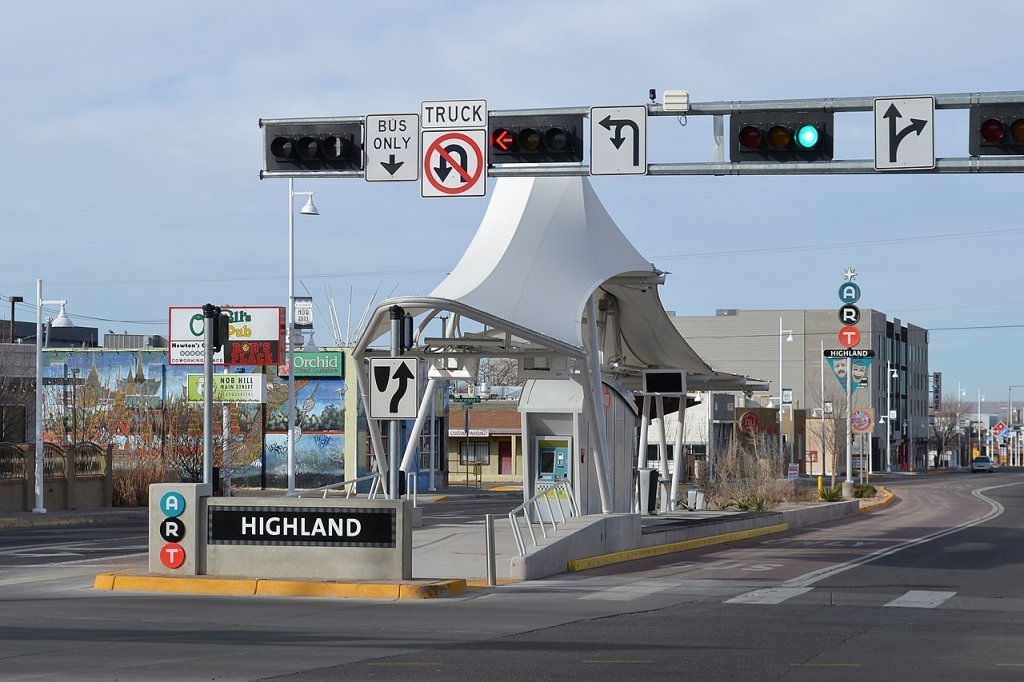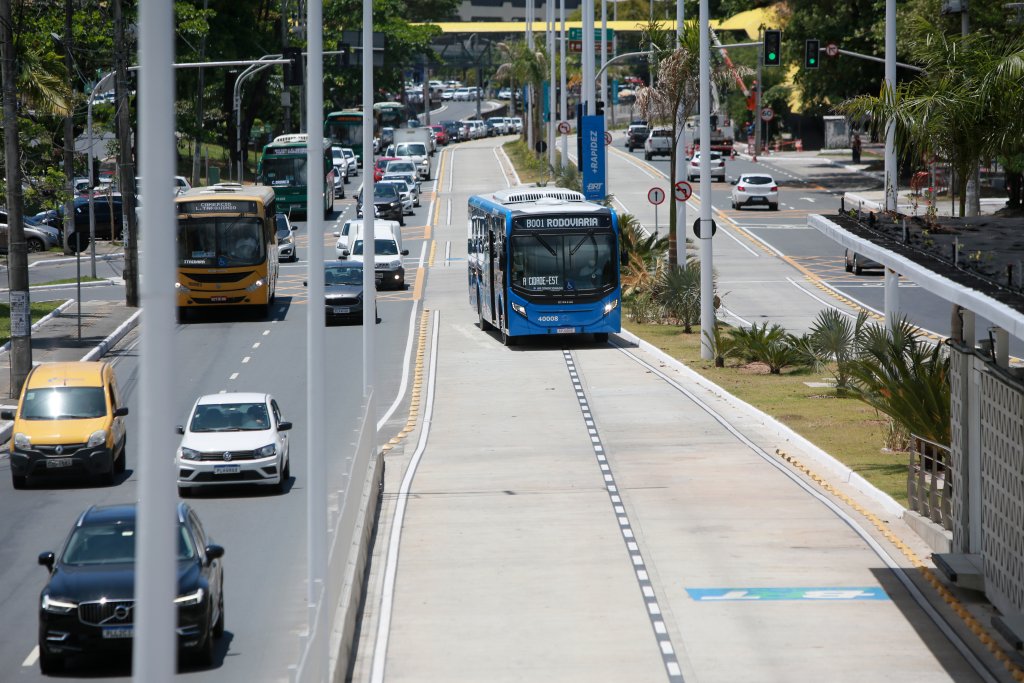Planopedia
Clear, accessible definitions for common urban planning terms.
What Is Bus Rapid Transit?
Combining elements of rapid transit with buses, BRT systems can provide faster, more reliable service at lower cost than rail-based transit.

Bus rapid transit, known as BRT, is a form of transit widely seen by transportation planning professionals and transit officials as a less costly alternative to light rail that offers a significant improvement over other fixed-route bus services that share lanes with regular traffic and makes bus service faster and more reliable.
BRT generally includes dedicated transit-only lanes or busways for at least part of the route, as well as prioritized traffic signal timing. BRT lanes are often located in the center of the roadway to limit interaction with cars, bikes, and pedestrians. In some cases, busways are elevated or underground.
Other components include off-board or pre-paid fare payment mechanisms so riders can board smoothly and avoid delays and platform-level boarding that makes boarding faster and ensures accessibility for people using wheelchairs, strollers, or other mobility devices. BRT lines often go hand in hand with intersection adjustments that prioritize buses and passengers such as prohibiting turns in front of buses and protected pedestrian access. To make BRT systems more effective, systems can design platforms to accommodate extra-long and articulated buses that can carry more passengers.

In addition to faster transit service, BRT has other advantages over rail. It creates less disruption of traffic and neighborhoods for construction, has a faster deployment time, uses less expensive vehicles, and requires faster operator training than light or heavy rail projects. Like any transit, BRT facilities must be combined with ample vehicles and staff to ensure short headways.
The Institute for Transportation and Development Policy issues a Bus Rapid Transit Standard, a tool designed to evaluate BRT systems and establish common definitions and standards. The standard includes a scorecard agencies can use to gauge the quality of their systems and understand best practices for effective BRT systems. Considerations included in the standard go beyond bus equipment and service to include bike parking, pedestrian access and safety, integration with shared mobility and other public transit, bus emissions and impact on the surrounding area, and more.
Bus rapid transit began with the Busway in Runcorn New Town, England, in 1971, and has grown to include systems in almost 200 cities and counting. The concept is popular in Latin America, with a daily BRT ridership of 1.6 million in 54 cities. As early as 2008, bus rapid transit was making headway in dozens of American cities, and projects continue to gain approval and funding around the country. Minneapolis, which had five BRT lines as of late 2022 and six more in the works, has a stated goal of becoming “the bus rapid transit capital of North America.” In 2023, a year that could mark a turning point for buses, Milwaukee’s first bus rapid transit line surpassed pre-pandemic ridership numbers in its first few weeks of operation.

A similar concept, arterial rapid transit (ART), retains some of the elements of BRT but eliminates some important elements, namely fully dedicated lanes. This concept was recently proposed in Atlanta, where the regional transit agency has proposed ART lines that operate in mixed traffic but allow buses to ‘skip in line’ and have less frequent stops.

